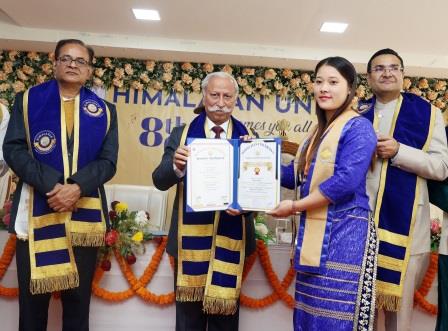-
SEC announces peaceful completion of vote counting in local body…
-
.jpg) BJP Arunachal Pradesh celebrates victory in local body elections
BJP Arunachal Pradesh celebrates victory in local body elections
-
.jpg) Governor interacts with NCC Cadets at training camp
Governor interacts with NCC Cadets at training camp
-
.jpg) National bodybuilding and fitness championship underway in Lower Siang
National bodybuilding and fitness championship underway in Lower Siang
-
BJP sweeps IMC elections; PPA aces PMC polls
-
 Governor attends Himalayan University Convocation
Governor attends Himalayan University Convocation
-
 Book on Traditional Festivals of Arunachal Pradesh released
Book on Traditional Festivals of Arunachal Pradesh released
-
Workshop on GIS and Remote Sensing
-
‘Yogananda Bhavan’ inaugurated at Ramakrishna Mission Narottam Nagar
-
Arunachal to participate in 9th Federation Cup Wushu Championship
In a country where red tapism has been held largely responsible for slowing the fruits of development in reaching the intended beneficiaries for decades, going digital is proving to be an effective solution as it has brought a sea change in the delivery of governance in many fields. Introduction of Government e-Marketplace or GeM in short is one such effective digital application, which although in infancy, has started showing efficacies already.
The term GeM can be better understood if viewed in backdrop of the huge governmental apparatus in entirety, consisting both the centre and state governments, PSUs, autonomous bodies etc with constant and daily needs for goods and services to keep them alive and kicking. It was also felt that for the country which spends an estimated 20% of GDP on public procurement, it is high time to revamp the system to keep in tune with changing times. To deal with this challenge Government of India set up GeM in 2016 signalling its willingness to bring radical reform in this area to wipe out the age old malpractices that became inseparable parts in any procurement transaction- big or small. And since then, it has effectively eliminated multiple levels of manual & sequential verification and decision-making, leading to dramatic reductions in lead-time in government procurement. For suppliers, too, this has opened more feasible and new options by eliminating intermediaries which earlier pushed their costs and has also guaranteed prompt release of payments. Many have even hailed it as the end of an era where files moved with the speed of a snail and the babus & their minions always had the last say.
As small piece of statistics will be enough to indicate how GeM is widening its net and saving the nation’s exchequer.Since its inception in 2016, it had grossed over Rs 23,000 crore in Gross Merchandise Value through more than 17 lakh transactions, bringing into its ambit over 2 lakh sellers and service providers with more than 34,000 government organisations all over the country as purchasers, resulting in an average saving of 25–28%.And most importantly, it is proving to be a great platform for the millions of Micro, Small and Medium Enterprises (MSMEs) by eliminating any human interface for vendor registration, order placement or payment processing and giving way to digital verifications via sms and email and thereby reducing corruption. Feeling encouraged, they are joining the platform in large numbers and now form more than 26% of the vendor segment.
The fundamental goal of building a welfare state may be possible now with the aid of these technology driven solutions which can contain corruption to a great extent. Arunachal is very much a part of GeM and its enterprising youths must take its full advantage.

Kenter Joya Riba
(Managing Editor)She is a graduate in Science with post graduation in Sociology from University of Pune. She has been in the media industry for nearly a decade. Before turning to print business, she has been associated with radio and television.
Email: kenterjoyaz@easternsentinel.in / editoreasternsentinel@gmail.com
Phone: 0360-2212313

